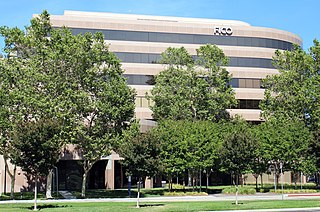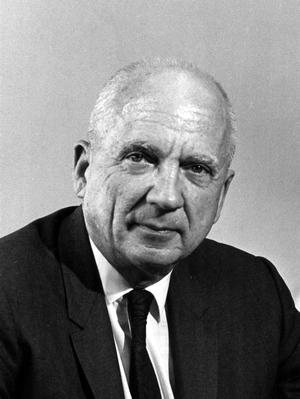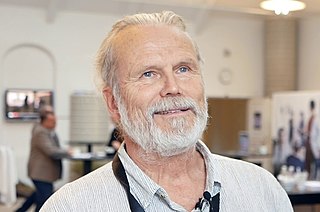
Los Alamos National Laboratory is one of the sixteen research and development laboratories of the United States Department of Energy (DOE), located a short distance northwest of Santa Fe, New Mexico, in the American southwest. Best known for its central role in helping develop the first atomic bomb, LANL is one of the world's largest and most advanced scientific institutions.

Sandia National Laboratories (SNL), also known as Sandia, is one of three research and development laboratories of the United States Department of Energy's National Nuclear Security Administration (NNSA). Headquartered in Kirtland Air Force Base in Albuquerque, New Mexico, it has a second principal facility next to Lawrence Livermore National Laboratory in Livermore, California, and a test facility in Waimea, Kauai, Hawaii. Sandia is owned by the U.S. federal government but privately managed and operated by National Technology and Engineering Solutions of Sandia, a wholly owned subsidiary of Honeywell International.

FICO, originally Fair, Isaac and Company, is a data analytics company based in Bozeman, Montana, focused on credit scoring services. It was founded by Bill Fair and Earl Isaac in 1956. Its FICO score, a measure of consumer credit risk, has become a fixture of consumer lending in the United States.

Norris Edwin Bradbury, was an American physicist who served as director of the Los Alamos National Laboratory for 25 years from 1945 to 1970. He succeeded Robert Oppenheimer, who personally chose Bradbury for the position of director after working closely with him on the Manhattan Project during World War II. Bradbury was in charge of the final assembly of "the Gadget", detonated in July 1945 for the Trinity test.

Los Alamos Ranch School was a private ranch school for boys in the northeast corner of Sandoval County, New Mexico, U.S., founded in 1917 near San Ildefonso Pueblo. During World War II, the school was bought and converted into the secret nuclear research campus for Project Y, which later became the Los Alamos National Laboratory. The surrounding location has developed into the town of Los Alamos.

Michael Anastasio led two national science laboratories during a time of transition. He was the director of the Los Alamos National Laboratory and president of the Los Alamos National Security LLC, the company that operates the laboratory. He is the former director of Lawrence Livermore National Laboratory (LLNL). The University of California Board of Regents appointed Michael R. Anastasio the director of LLNL on June 4, 2002. He started on July 1, 2002. In 2005 he became the president of the Los Alamos National Security LLC, and became the director of the Los Alamos National Laboratory on June 1, 2006. During his directorship at Lawrence Livermore, the laboratory won 25 R&D 100 Awards and maintained its world-class leadership position in high-performance computing and its application to global climate modeling.

George Arthur Cowan was an American physical chemist, a businessman and philanthropist.
EXALEAD is a software company, created in 2000, that provided search platforms and search-based applications (SBA) for consumer and business users. The company was headquartered in Paris, France, and was a subsidiary of Dassault Systèmes.

The Cerro Grande Fire was a prescribed-burn forest fire in Los Alamos, New Mexico, United States of America, that occurred in May of 2000. The fire started as a controlled burn on May 4, 2000, and became uncontrolled owing to high winds and drought conditions. Over 400 families in the town of Los Alamos, New Mexico, lost their homes in the resulting 47,000 acre fire. Structures at Los Alamos National Laboratory were also destroyed or damaged, although without loss or destruction of any of the special nuclear material housed there. No loss of human life occurred. The US General Accounting Office estimated total damages at $1 billion.

Steen Rasmussen is a Danish physicist mainly working in the areas of artificial life and complex systems. He is currently a professor in physics and a center director at University of Southern Denmark as well as an external research professor at the Santa Fe Institute. His formal training was at the Technical University of Denmark and University of Copenhagen (philosophy). He spent 20 years as a researcher at Los Alamos National Laboratory (1988-2007) the last five years as a leader of the Self-Organized Systems team. He has been part of the Santa Fe Institute since 1988.
David Pines was a US physicist recognized for his work in quantum many-body systems in condensed matter and nuclear physics. With his advisor David Bohm, he contributed to the understanding of electron interactions in metals. Bohm and Pines introduced the plasmon, the quantum of electron density oscillations in metals. They pioneered the use of the random phase approximation. His work with John Bardeen on electron-phonon interactions led to the development of the BCS theory of superconductivity. Pines extended BCS theory to nuclear physics to explain stability of isotopes with even and odd numbers of nucleons. He also used the theory of superfluidity to explain the glitches in neutron stars.

Anthony (Ant) Nicholls is a physicist and entrepreneur from Plympton, Plymouth, England.
Casa Mesita refers to two separate non-profit organizations in Los Alamos, New Mexico. Casa Mesita Thrift Shop and Casa Mesita Group Home are two of many social enterprise organizations in Los Alamos County, one of the highest-income counties in the United States, in a state with household income far below the national median.
Figaro Systems, Inc. is an American company that provides seatback and wireless titling software and system installations to opera houses and other music performance venues worldwide. The company is based in Santa Fe, New Mexico. It was established in 1993 by Patrick Markle, Geoff Webb, and Ron Erkman and was the first company to provide assistive technology that enables individualized, simultaneous, multi-lingual dialogue and libretto-reading for audiences.

Los Alamos is a census-designated place in Los Alamos County, New Mexico, United States, that is recognized as one of the development and creation places of the atomic bomb—the primary objective of the Manhattan Project by Los Alamos National Laboratory during World War II. The town is located on four mesas of the Pajarito Plateau, and had a population of about 13,200 as of 2020. It is the county seat and one of two population centers in the county known as census-designated places (CDPs); the other is White Rock.
Peter Carruthers was an American physicist best known for leading the theoretical division of Los Alamos National Laboratory from 1973 until 1980.

Mark Galassi is a physicist, computer scientist, and contributor to the free and open-source software movement. He was born in Manhattan, grew up in France and Italy, and lives in Santa Fe, New Mexico.

Dorothy McKibbin worked on the Manhattan Project during World War II. She ran the project's office at 109 East Palace Avenue in Santa Fe, through which staff moving to the Los Alamos Laboratory had to pass through to obtain security credentials and directions to their new workplace. She was known as the "first lady of Los Alamos", and was often the first point of contact for new arrivals. She retired when the Santa Fe office closed in 1963.
Emily Willbanks was a scientist at the Los Alamos National Laboratory from 1954–1990. She made advancements in the fields of mathematics, computing, and data systems. She used her background in physics and mathematics to contribute to defense weapons and high-performance storage systems at Los Alamos. She was instrumental in the advancement of a major weather centre in England, was involved in many classified projects for the government, and revolutionized the mass data storage system.
Jane Elizabeth (Beth) Nordholt is an American physicist known for her work in space science on mass spectrometry of the solar wind and rings of Saturn and the flow of water vapor in the Earth's polar wind, and for her work in digital security on devices for quantum key distribution and random number generation. Until her retirement, she worked at Los Alamos National Laboratory, which in 2006 named her as a Laboratory Fellow.












